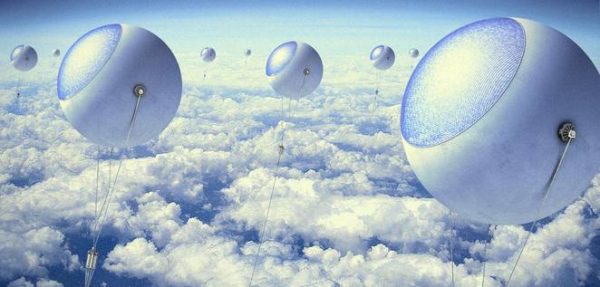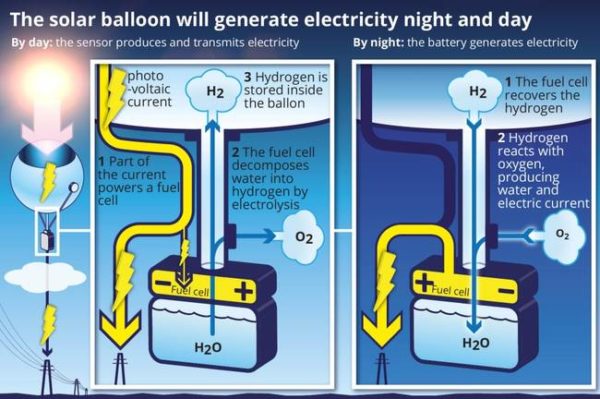
Solar energy has an enormous potential. However, one of its biggest setbacks is that if there is no sunlight, there will be no energy for its users. On cloudy days, the energy it produces is pretty low. This makes the standard solar technology not suitable for places where sunlight is not available in abundance.
Researchers have been looking at how to solve this limitation. And it looks like the solution is finally here. Researchers from Japan and France have announced that they have conceived an idea that could make solar energy available on cloudy or rainy days.
The laboratory where this brilliant idea was conceived, Japanese-French Next generation Photovoltaic Cells (NextPV), is jointly operated by the French National Center for Scientific Research and the University of Tokyo, Japan.
The research team revealed their work to deploy solar balloons above the clouds to trap energy direct from the sun. The balloon will combine solar photovoltaic (PV) panels, hydrogen production, and fuel cells, which could store energy for temporal use, especially during night time. The researchers believe these balloons will overcome some of the limitations associated with standard ground-based PV arrays.
It is believed the solar balloon concept would far advance solar technology. The researchers hope to make the system work by combining direct solar electricity production during the day with the production of hydrogen, which serves as an energy storage medium for producing electricity in a fuel cell, long after the sun goes down.
The researchers are hoping to deploy the balloons about 6 kms above the clouds. By getting the balloons at this height, they could produce three times energy than the same sizes of ground-based PV. It is said there are few clouds at an altitude of 6 kms, and none at all at about 20 kms. The solar balloons will therefore be able to have greater access to the sun at the projected height.
Co-director of NextPV laboratory, Jean-François Guillemoles said the research team is posed to solve the greatest limitations on solar energy. Mr Guillemoles stated “The main problem with photovoltaic energy is that sunlight can be obscured by clouds, which makes electrical production intermittent and uncertain. But above the cloud cover, the sun shines all day, every day. At those heights, the light comes directly from the Sun, as there are no shadows and hardly any diffusion by the atmosphere. As the sky loses its blue color, direct illumination becomes more intense: the concentration of solar energy results in more effective conversion, and hence higher yields.”
According to Guillemoles, by using hydrogen as an energy vector, it is theoretically possible to provide solution for intermittency of renewables. This can be obtained through what is known as electrolysis, with excess solar electricity during the day, and then recombined with oxygen in a fuel cell to generate electricity during the night. The process will produce only water (hydrogen) as a byproduct. The hydrogen could also be used to inflate the balloons and keep them aloft without external energy inputs, making the system potentially more efficient.
At the moment, the solar balloon is still at its conceptual stage. The researchers are hoping that by the end of 2017, they would be able to build the first prototype of the balloon.
However, some experts believe generating solar energy from the balloons will likely face some challenges. Some of these challenges will be the length of cables connecting the balloons with the ground, and also how it will compete with standard PV in terms of prices, especially when the prices of standard PV continue to drop sharply every year, worldwide.
Some observers even believe that the political will to implement the solar energy efficiency, will not be there in many countries. In the video below, the late British physicist, mathematician, and academic, David J MacKay discusses some of the real issues on renewable at the TED talk held in 2013.
You want to support Anonymous Independent & Investigative News? Please, follow us on Twitter: Follow @AnonymousNewsHQ
This article (Researchers Hope to Advance Solar Energy by Trapping Sunlight With Solar-Built Balloons in the Sky) is a free and open source. You have permission to republish this article under a Creative Commons license with attribution to the author and AnonHQ.com.






